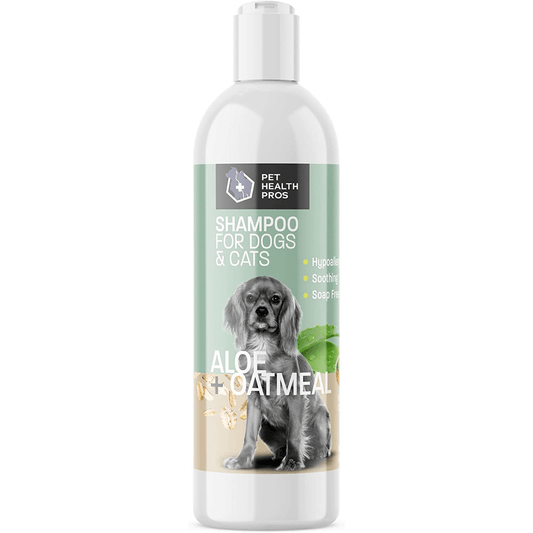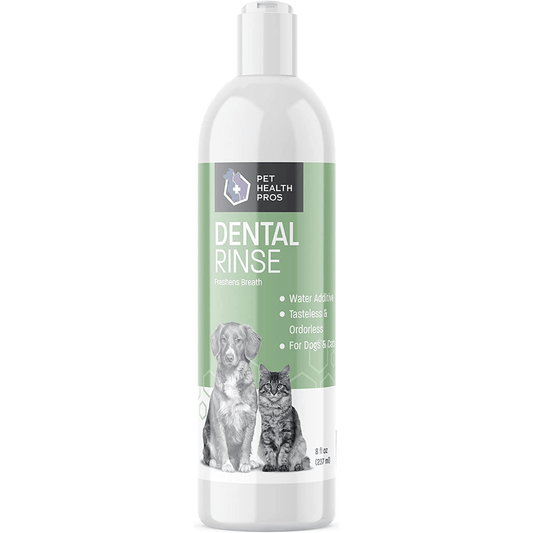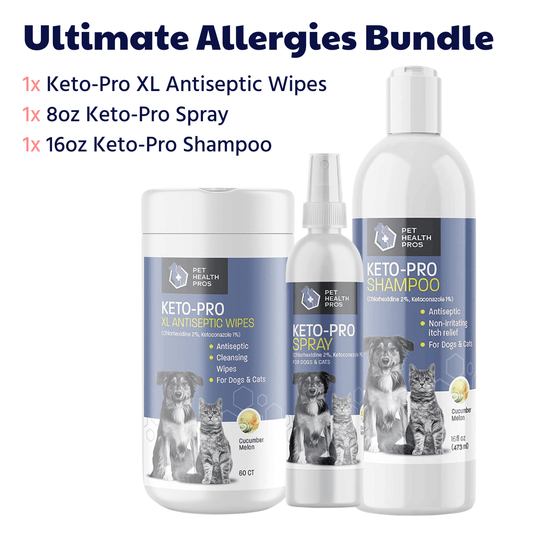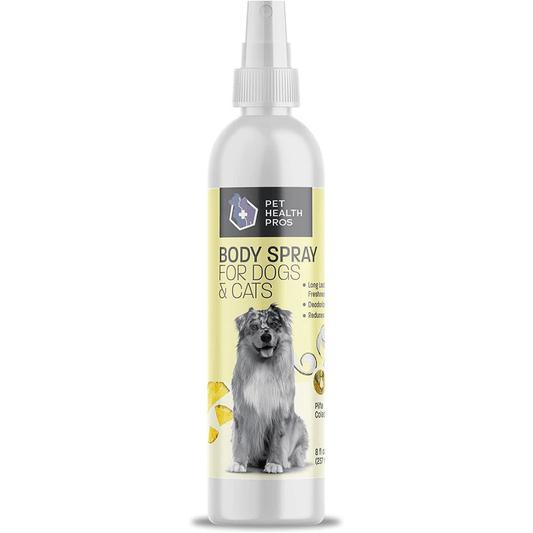When it comes to keeping our canine companions healthy, understanding the right treatments is essential. Two commonly used medications in veterinary care are chlorhexidine and ketoconazole. These two agents have distinct roles in managing various health issues in dogs. This guide will explore how they work, their benefits, and how to use them safely. If you're a dog owner looking for effective solutions for your pet's health problems, this information could be very helpful.
Key Takeaways
- Chlorhexidine is primarily an antiseptic used for cleaning wounds and preventing infections in dogs.
- Ketoconazole is an antifungal medication that helps treat fungal infections in dogs.
- Using chlorhexidine and ketoconazole together can enhance treatment effectiveness for certain conditions.
- Always consult your veterinarian before starting any treatment to ensure safety and proper dosage.
- Monitor your dog for any side effects when using these medications, and report any concerns to your vet.
The Role of Chlorhexidine in Canine Health
Understanding Chlorhexidine
So, what's the deal with chlorhexidine? Well, it's a big deal in keeping our furry friends healthy. It's basically an antiseptic, meaning it helps to kill or prevent the growth of nasty microorganisms like bacteria, fungi, and even some viruses. Think of it as a first line of defense against infections for your dog.
How Chlorhexidine Works
Okay, so how does this stuff actually work? Chlorhexidine messes with the cell membranes of those microorganisms. It binds to the cell wall, causing it to leak and eventually die. It's pretty effective, and that's why vets use it so much. It's not absorbed well through the skin, which is good because it means it stays on the surface where it's needed, doing its job without causing a bunch of systemic issues.
Common Uses in Veterinary Medicine
Chlorhexidine is like the Swiss Army knife of antiseptics in veterinary medicine. Here are some common uses:
- Wound Care: Cleaning cuts, scrapes, and surgical sites.
- Skin Infections: Treating bacterial or fungal skin issues.
- Dental Hygiene: As a mouthwash to help prevent plaque and gingivitis.
- Hot Spots: Managing those itchy, inflamed areas dogs love to lick.
Basically, if there's a risk of infection, chlorhexidine is often the go-to solution. It's reliable, relatively safe when used correctly, and it gets the job done. Just make sure you're using it as directed by your vet!
Benefits of Ketoconazole for Dogs
What is Ketoconazole?
Ketoconazole is an antifungal medication that's often used in veterinary medicine to treat fungal infections in dogs. It belongs to a class of drugs called azoles, which work by interfering with the synthesis of ergosterol, a key component of fungal cell membranes. It's not an antibiotic; it specifically targets fungi. I remember when Buster had that nasty skin thing, and the vet said it was fungal. Ketoconazole was a lifesaver!
Mechanism of Action
Ketoconazole works by inhibiting the production of ergosterol, an essential part of the fungal cell membrane. Without ergosterol, the fungal cell membrane becomes unstable and leaky, eventually leading to the death of the fungal cell. It's like poking holes in a balloon until it can't hold air anymore. This targeted approach makes it effective against a range of fungal infections without harming the dog's cells directly.
Indications for Use
Ketoconazole is prescribed for various fungal infections in dogs, including:
- Dermatophytosis (ringworm)
- Yeast infections (Malassezia dermatitis)
- Systemic fungal infections (e.g., blastomycosis, histoplasmosis)
- Aspergillosis
It's important to note that ketoconazole isn't a cure-all. The vet will need to diagnose the specific type of fungal infection before prescribing it. Sometimes, other medications might be needed in combination with ketoconazole for the best results.
Ketoconazole is usually given orally, and the dosage depends on the dog's weight and the severity of the infection. It's important to follow the vet's instructions carefully and complete the entire course of medication, even if your dog seems to be getting better. Stopping early can lead to the infection coming back, and sometimes even stronger!
Combining Chlorhexidine and Ketoconazole
Synergistic Effects
So, you're probably wondering if using chlorhexidine and ketoconazole together is better than using them separately. Well, in many cases, the answer is yes! These two medications can have a synergistic effect, meaning they work together to fight infections more effectively than either one alone. Think of it like a tag team against yeast and bacteria.
When to Use Together
Okay, so when is it a good idea to use these two together? Here's a few scenarios:
- Severe Infections: When your dog has a really bad skin infection that isn't responding to single-ingredient treatments.
- Resistant Infections: If the infection is caused by organisms that are resistant to either chlorhexidine or ketoconazole alone.
- Broad-Spectrum Coverage: To tackle both bacterial and fungal infections at the same time.
Basically, if your vet suggests using both, it's usually because they're trying to hit the infection from multiple angles to get it under control quickly.
Safety Considerations
Alright, let's talk safety. While combining these medications can be super effective, it's important to be aware of potential issues. Here's the deal:
- Increased Sensitivity: Some dogs might be more sensitive to the combination, leading to skin irritation or dryness.
- Drug Interactions: Ketoconazole, especially when given orally, can interact with other medications your dog might be taking. Always tell your vet about everything your dog is on.
- Proper Dilution: If you're using a shampoo or rinse, make sure you dilute it properly. Concentrated solutions can cause burns or irritation.
It's always best to follow your vet's instructions carefully and keep an eye out for any weird reactions. If something seems off, give them a call!
Application Methods for Chlorhexidine and Ketoconazole
Topical Applications
Topical application is often the go-to method for treating skin issues in dogs. Chlorhexidine shampoos, sprays, and wipes are common. For shampoos, it's important to really lather up your dog and let the product sit for about 10 minutes before rinsing. This allows the medication to really soak in. Sprays and wipes are good for spot treatments or in-between baths.
Ketoconazole also comes in shampoos, creams, and sprays. Creams are great for localized fungal infections. Just make sure the area is clean and dry before you apply anything. Sprays are useful for larger areas, but try to avoid getting it in your dog's eyes or mouth.
Oral Medications
Ketoconazole is sometimes given orally, usually in tablet form, to treat systemic fungal infections. It's not something you'd typically use chlorhexidine for, as that's more for surface-level stuff. Oral ketoconazole needs a vet's prescription and careful monitoring.
Dosage Guidelines
Figuring out the right dose is super important. For topical stuff, follow the directions on the product label. Don't just assume more is better – it could irritate your dog's skin. For oral ketoconazole, your vet will calculate the dose based on your dog's weight and the severity of the infection.
Here's a general idea of what dosages might look like, but always confirm with your vet:
| Medication | Form | Typical Dosage |
|---|---|---|
| Chlorhexidine Shampoo | Shampoo | Follow label instructions, usually 1-2x/week |
| Ketoconazole Tablets | Oral | 5-10 mg/kg, once or twice daily |
It's really important to stick to the dosage your vet recommends. Don't skip doses or stop early, even if your dog seems better. Stopping too soon can lead to the infection coming back, sometimes even stronger than before.
Potential Side Effects and Risks
Common Side Effects
Alright, so, like with any medication, there's a chance your dog might experience some side effects when using chlorhexidine or ketoconazole. Usually, these aren't too serious, but it's still good to know what to look out for. For chlorhexidine, some dogs might get a little skin irritation, like redness or dryness, especially if they have sensitive skin. You might also notice some temporary hair loss around where you're applying it. Ketoconazole can sometimes cause gastrointestinal upset, so your dog might have a decreased appetite, vomit, or have diarrhea.
- Skin irritation (redness, dryness, itching)
- Temporary hair loss at the application site
- Gastrointestinal upset (decreased appetite, vomiting, diarrhea)
Serious Reactions
Okay, so while most side effects are mild, there's always a chance of something more serious happening. Allergic reactions are rare, but they can occur. If you see any signs like swelling of the face, hives, or difficulty breathing, you need to get your dog to the vet immediately. Also, ketoconazole can sometimes affect the liver, especially if it's used for a long time or at high doses. So, it's super important to keep an eye on your dog and report anything unusual to your vet.
- Allergic reactions (facial swelling, hives, difficulty breathing)
- Liver problems (jaundice, lethargy)
- Severe skin reactions (ulceration, blistering)
Monitoring Your Dog's Health
Honestly, the best way to keep your dog safe is to just pay attention to them. Watch for any changes in their behavior, appetite, or energy level. If you're using ketoconazole, your vet might want to do some blood tests to check their liver function, especially if they're on it for a while. And, of course, always follow your vet's instructions carefully when it comes to dosage and how often to use the medication. If you're ever unsure about something, just give them a call – it's always better to be safe than sorry.
It's important to maintain open communication with your veterinarian throughout the treatment process. Regular check-ups and blood tests can help detect any potential problems early on, allowing for timely intervention and adjustments to the treatment plan.
Alternatives to Chlorhexidine and Ketoconazole
If chlorhexidine and ketoconazole aren't the right fit for your dog, or if you're just looking for other options, there are definitely some things you can consider. It's always a good idea to chat with your vet before switching anything up, though. They can help you figure out the best course of action for your dog's specific situation.
Other Antiseptics
When chlorhexidine isn't ideal, a few other antiseptics can step in. Povidone-iodine is one such alternative, known for its broad-spectrum antimicrobial activity. It's effective against bacteria, fungi, viruses, and protozoa. Another option is benzalkonium chloride, which is often found in antiseptic wipes and sprays.
Alternative Antifungals
If ketoconazole isn't working out, or if your vet thinks another antifungal would be better, there are other choices. Itraconazole is a common alternative, and it's often used for similar fungal infections. Fluconazole is another option, and sometimes it's preferred because it can penetrate certain tissues better than ketoconazole. Griseofulvin is an older antifungal, but it's still used in some cases, especially for ringworm. Always consult with your vet to determine the best antifungal medication for your dog's specific condition.
Natural Remedies
Some people explore natural remedies as complementary or alternative treatments. These options often have less scientific backing but may provide some relief. For example:
- Aloe vera: Can soothe irritated skin.
- Oatmeal baths: Help relieve itching.
- Herbal rinses: Chamomile or calendula can have anti-inflammatory effects.
It's important to remember that natural remedies might not be as potent as prescription medications, and they could potentially interact with other treatments your dog is receiving. Always discuss these options with your vet to ensure they're safe and appropriate for your pet.
Consulting Your Veterinarian
It's easy to get caught up in DIY treatments, especially when your dog is uncomfortable. But when it comes to medicated treatments like chlorhexidine and ketoconazole, your vet is your best resource. They can give you the right advice for your dog's specific needs.
Importance of Professional Guidance
Your veterinarian plays a key role in diagnosing the underlying cause of skin issues. They can figure out if it's allergies, an infection, or something else entirely. Using chlorhexidine and ketoconazole without knowing the root cause might only mask the symptoms, and the problem could get worse. A vet can also help you choose the right product and strength, because not all products are created equal. They will consider your dog's breed, age, and overall health.
Questions to Ask Your Vet
When you talk to your vet, come prepared with questions. Here are a few ideas:
- What's causing my dog's skin problem?
- Is this the best treatment option for my dog's specific condition?
- How often should I use the medication?
- What side effects should I watch out for?
- Are there any other treatments I should consider?
Follow-Up Care
After starting treatment, it's important to keep in touch with your vet. Regular check-ins allow them to monitor your dog's progress and make any necessary adjustments to the treatment plan. If your dog isn't improving, or if you notice any new or worsening symptoms, let your vet know right away. They might need to run more tests or try a different approach.
Remember, your vet is there to help you and your dog. Don't hesitate to reach out with any questions or concerns you might have. They want to see your furry friend happy and healthy!
When it comes to your pet's health, talking to your veterinarian is really important. They can help you understand what your pet needs and answer any questions you might have. If you're unsure about something, don’t hesitate to reach out! For more tips and resources, visit our website today!
Final Thoughts on Chlorhexidine and Ketoconazole for Your Dog
In summary, using chlorhexidine and ketoconazole can be really helpful for your dog’s skin issues. Chlorhexidine is great for cleaning and preventing infections, while ketoconazole tackles fungal problems effectively. When used together, they can really make a difference in your dog's health. Always remember to follow your vet's advice on how to use these products safely. Keeping your dog healthy and happy is the goal, and these treatments can be part of that plan. So, if your pup is dealing with skin problems, consider talking to your vet about these options.
Frequently Asked Questions
What is Chlorhexidine used for in dogs?
Chlorhexidine is an antiseptic that helps clean wounds and prevent infections in dogs.
How does Ketoconazole work for dogs?
Ketoconazole is an antifungal medication that fights fungal infections by stopping the growth of fungi.
Can I use Chlorhexidine and Ketoconazole together?
Yes, these two can be used together, but it's important to follow your vet's advice on how to do it safely.
What are the side effects of Chlorhexidine?
Some dogs may experience skin irritation or allergic reactions when using Chlorhexidine.
Is Ketoconazole safe for all dogs?
Ketoconazole is generally safe, but it may not be suitable for dogs with liver problems. Always consult your vet.
What should I ask my vet about these medications?
You can ask about the best way to use them, possible side effects, and if there are any alternatives.








